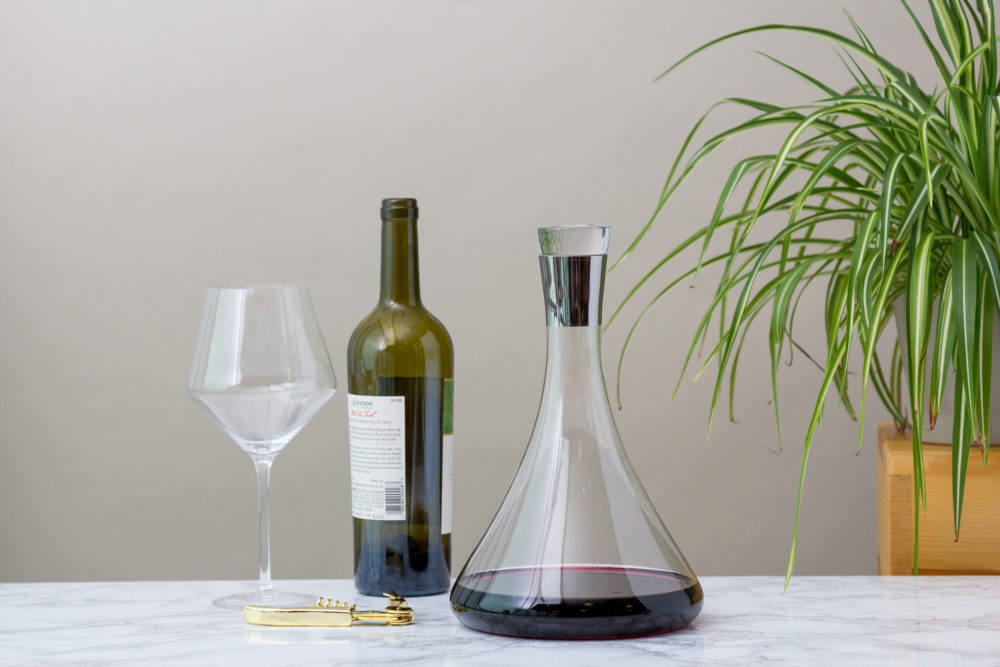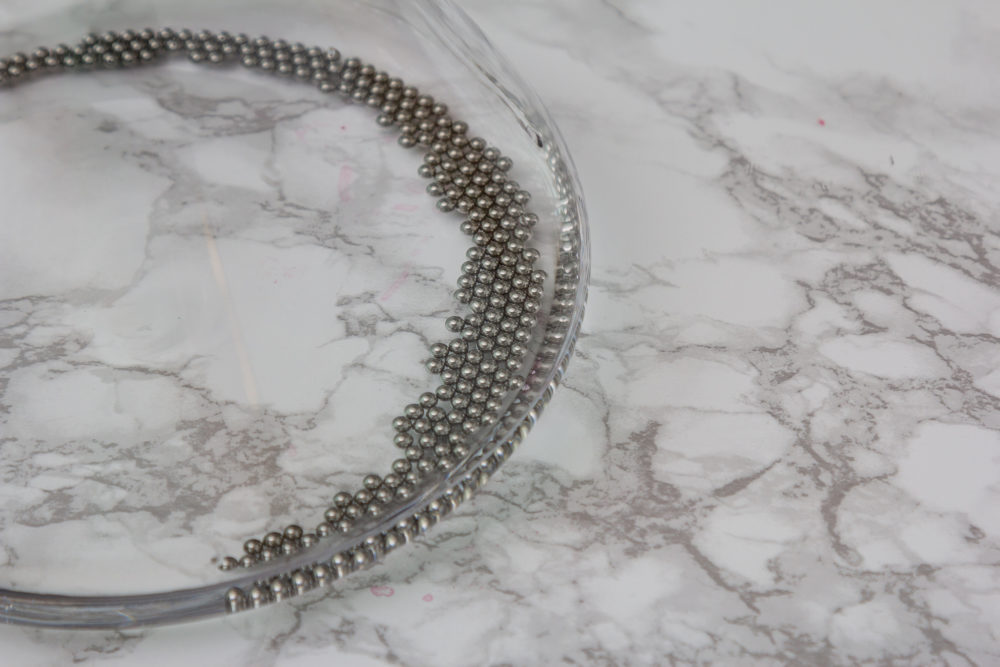

If you're under the impression that decanting wine is a big production best left to wine snobs drinking expensive bottles, it's time to reconsider. Decanting a wine is a simple process that can benefit even inexpensive table wines. The trick is knowing when and how to do it.
What Is Decanting?
Decanting is the act of transferring wine from its bottle to another container. Though any clean, empty vessel will do, it is recommended that you use specialized glassware called--wait for it-- a decanter.
Spirits like whiskey may also be decanted, but for the purposes of this article, we are limiting the discussion to wine.
Reasons to Decant Wine
There are a few reasons to decant wine.
1. Sediment
The first and undisputed benefit is that it is an opportunity to separate wine from any sediment that may have collected in the bottle. Wine bottle sediment is made up of yeast cells, small bits of grape solids, and tartaric acid crystals. It isn't harmful, but it does impede a wine’s appearance and can add unpleasant bitterness and/or astringency.
Because most wines go through an extensive filtration process, sediment is not present in most bottles. There are two exceptions to this rule: wines that have purposely been left unfiltered (obviously) and older wines that have been aged in the bottle. The maturation process often causes sediment to fall out of solution.
2. Aeration
Aeration, or the deliberate exposure of wine to air, is a second reason many people choose to decant. As you slowly pour wine from the bottle to the decanter, it comes in direct contact with oxygen, a reactive element. Oxygen further reacts with the wine in the decanter itself. In contrast to a narrow bottle opening, decanters are designed to expose a large surface area of wine to the air. As it sits in the decanter, the wine thus has additional opportunity to “breathe.”
In theory, letting a wine breathe opens up its bouquet and mellows out any harsh flavor or tactile compounds that may be present. Aeration is considered especially useful for highly concentrated, highly tannic red wines like Barolos that have yet to reach full maturity.
3. Aesthetics
You can also decant for superficial reasons. Some people simply prefer the look of wine served out of attractive glass or crystal decanters.
The Decanting Debate
Not everyone agrees that decanting for the sake of aeration, especially in the case of ready-to-drink, young wines, is a useful practice. Detractors claim that any exposure to oxygen diffuses aroma to a fault, robbing the wine of some of its complexity. If a wine is inexpressive or imbalanced in some way, they argue that swirling the wine in the glass provides sufficient aeration with greater control over the process. They also point out that aerating in the glass allows the drinker to experience each stage of a win’s evolution as it gradually opens up.
The Best (and Worst) Wines to Decant
Any wine--red, white, young, or old--can be decanted. Some wines, however, are more likely to improve than others.
Wines with visible sediment are obvious candidates for decanting. As previously mentioned, older wines, especially reds older than five years, are more likely to have sediment than young wines. Wines of any age that are tight, very tannic, or inexpressive are also appropriate. They will benefit most from exposure to oxygen.
Sparkling wines are one variety you should probably keep in the bottle. It’s not unheard of to decant an older champagne, but the process undoubtedly affects carbonation for the worse. In my book, bubbles are inherent to sparkling wine’s appeal and should be preserved.
How to Decant Wine

If you are decanting a young wine to soften its edges, the decanting process is simple. Just pour from the bottle into a clean, dust-free decanter a few minutes or up to a couple hours before you plan to serve the wine.
If you are decanting an aged wine to remove sediment, you’ll have to take some extra steps. You’ll also want to exercise some caution and delicacy.
Because aged wines are more susceptible to the deleterious effects of oxidation, it is safer to decant them just before service. If you decant a delicate wine too far in advance, you'll risk ruining the bottle due to oxidation.
Steps to Decanting an Aged Wine
If you can plan ahead, set the bottle upright for at least a few hours (longer is even better). This will cause any sediment to fall to the bottom, which will make it easier to separate from the wine. If your wine has been stored on its side and you want to serve it right away, you’ll just want to work gingerly and try keep the bottle on its side as you move through the process. This will help prevent any fallen sediment from redistributing.
Next, find a light source that will illuminate the dark bottle while you decant. A lit candle, flashlight, or small lamp does the trick. Turning your attention to the bottle, remove the entire foil capsule and cork so you can watch the wine as it passes through the neck to the decanter. Wipe the mouth of the bottle clean before proceeding.
To transfer the wine, hold your decanter in one hand and the wine bottle in the other. Position the bottle so it is illuminated by your light source, and then slowly and steadily pour the wine into the decanter. Watch the bottle closely as you pour, and stop pouring when you see sediment in the neck.
If you want to try to salvage the few ounces of wine left in bottle with the sediment, or if you did not let the bottle stand upright in advance and want to take extra precautions, you can decant through a filter. A few layers of cheesecloth placed over the mouth of the decanter will catch most of the sediment.
Serving Decanted Wine
Whichever method you choose, the wine in the decanter is ready to serve. Taste it to decide if you want to drink it right away or let it continue to breathe. Just remember that after a certain amount of time, aeration becomes excessive, and the wine is worse for it.
Choosing a Good Decanter
A good decanter is one that is, first and foremost, clean and free of odors. Beyond that, it is helpful if your decanter is at least 1 liter, so it can hold a full bottle of wine with plenty of breathing room. It should be clear so you can see the color and clarity of the wine. And it is helpful if it is easy to clean.
Cleaning Your Decanter

Speaking of clean decanters, dish detergent can leave behind a soapy residue that interferes with the taste of your wine. Skip the soap and just give yours a good rinse between uses. Propping it upside down on a drying stand will help all of the water evaporate. If you notice stains after repeated use, a set of reusable stainless steel cleaning beads will help clear things up.




Leave a Comment